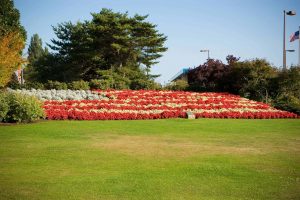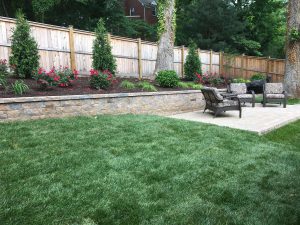Reasons for Dormancy
Cool-season grasses go dormant to protect themselves during long, hot periods when they do not have enough water to remain in an active growth phase. Warm-season grasses go dormant in cold weather when they die back naturally. In both cases, the grasses’ crowns remain alive, and, in hot situations, water may revive the grasses. Don’t worry: Dormancy is a natural, built-in protection mechanism, and your grass probably will return when the weather cools in fall.
Dead Grass
 Dead grass is hard to detect, especially during hot summer months, when grass often becomes dormant as a response to heat and accompanying drier soil, and during winter months, when grass becomes dormant as a response to cold temperatures. One of the best ways to detect whether or not the grass is dead in hot summer months is to keep watering it. Keeping grass green with irrigation can help highlight brown areas that might be dead. In winter, when the grass is dormant because of cold weather, determining whether or not the grass is dead can be more difficult, and you may have to wait until spring to see if it comes out of dormancy.
Dead grass is hard to detect, especially during hot summer months, when grass often becomes dormant as a response to heat and accompanying drier soil, and during winter months, when grass becomes dormant as a response to cold temperatures. One of the best ways to detect whether or not the grass is dead in hot summer months is to keep watering it. Keeping grass green with irrigation can help highlight brown areas that might be dead. In winter, when the grass is dormant because of cold weather, determining whether or not the grass is dead can be more difficult, and you may have to wait until spring to see if it comes out of dormancy.
Dormant Grass
Dormant grass often looks exactly like dead grass, but one measure helps to ensure that dormancy doesn’t equal death. In a low-water situation, grass becomes dormant as a natural response to protect its crowns from which grass blades grow. The dormancy can look like death, but unlike death, the grass still needs a minimum amount of water to get through a hot, dry period without dying. You may not know whether the grass is dead or dormant, however, until it becomes green again in fall or spring.
Solution for Dormancy
 Changes in weather often bring grass out of dormancy naturally. If the grass is a cool-season variety, it turns green with fall’s lower temperatures and increases in water. Warm-season grass varieties liven up when temperatures rise. If you want your lawn to remain green year-round, plant a mixture of grass seeds so that a cool-season variety and a warm-season variety take each other’s place as weather changes. Increasing irrigation may keep cool-season grass from going dormant, but not much can be done otherwise.
Changes in weather often bring grass out of dormancy naturally. If the grass is a cool-season variety, it turns green with fall’s lower temperatures and increases in water. Warm-season grass varieties liven up when temperatures rise. If you want your lawn to remain green year-round, plant a mixture of grass seeds so that a cool-season variety and a warm-season variety take each other’s place as weather changes. Increasing irrigation may keep cool-season grass from going dormant, but not much can be done otherwise.
